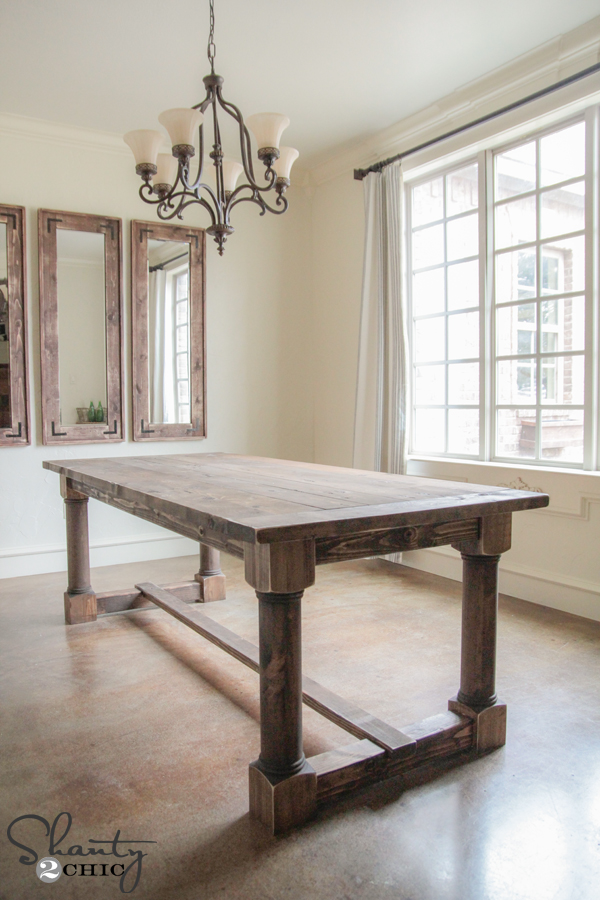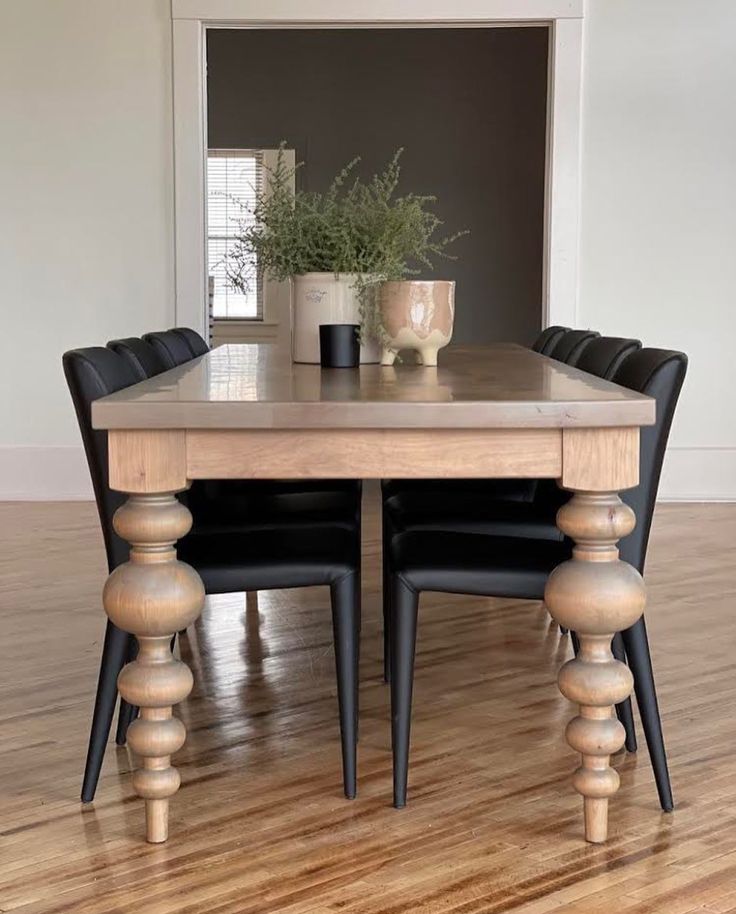The Top Trends in Dining Room Table Legs You Need to Know
Wiki Article
Just How to Choose the Perfect Dining-room Table Legs for Your Home Design
Selecting the optimal dining-room table legs is a nuanced procedure that requires cautious factor to consider of numerous aspects, including your area restrictions, visual preferences, and useful demands. The interaction in between products, dimensions, and styles can considerably influence the ambiance of your dining area, making it important to approach this choice systematically. As you ponder the myriad alternatives readily available, it becomes clear that the ideal selection expands beyond plain appearance; it can boost your overall eating experience. What factors should you prioritize to ensure your choice matches your home's unique personality?Assess Your Eating Room
Evaluating your dining space is important for choosing the right table legs that complement both looks and functionality. Begin by measuring the measurements of your eating area, including ceiling height, floor area, and closeness to other furnishings. This information will help figure out the ideal size and height of your table, which directly influences the option of table legs.Next, consider the style and format of your eating room. An open-concept design might profit from table legs that offer aesthetic lightness, such as slender metal or acrylic choices. On the other hand, a much more standard setting could ask for strong wooden legs that offer a feeling of permanence.
Review the existing color scheme and materials in your dining area. Harmonizing the table legs with these components produces a natural look that enhances the total design. Furthermore, think of the capability called for in your area. If you frequently organize large events, think about legs that give added assistance and security.
Eventually, a detailed evaluation of your dining room will lead you in making an informed choice, making sure that your table legs not just improve the visual charm but also offer practical functions.
Consider Your Design Preferences
When choosing dining-room table legs, it is vital to review your individual style preferences, as they considerably affect the general aesthetic of your dining area. Your option of table legs can either complement or contrast with existing design, making it crucial to straighten them with your favored interior layout style.If your home leans in the direction of a modern-day aesthetic, consider sleek metal or minimalist wood legs that offer a clean, clean look. For a more typical approach, ornate wood legs with elaborate carvings can add a touch of style and sophistication. Industrial styles gain from robust, resources such as reclaimed timber and steel combinations, showing a sturdy charm.
Furthermore, farmhouse and rustic styles often favor durable, beefy legs that stimulate a sense of warmth and convenience. Alternatively, if your decor is eclectic, you might select non-traditional forms or a mix of materials to produce visual passion.

Evaluate Material Options
The option of product for dining room table legs plays a critical function in both toughness and aesthetic allure. Usual materials include timber, steel, and composite alternatives, each offering distinct qualities that can affect the total appearance and longevity of your table.Timber is a traditional option, known for its heat and flexibility. Hardwoods like oak and walnut supply remarkable stamina and can be completed in numerous discolorations to match any type of design. Nonetheless, softwoods like yearn are more prone to scratches and damages, making them less excellent for high-traffic areas.
Steel legs, typically crafted from steel or light weight aluminum, radiate modernity and commercial charm. They are highly sturdy and resistant to wear, making them suitable for family members with children or constant events (dining room table legs). In addition, steel can be ended up in different colors, improving the customization opportunities
Composite materials, such as MDF or laminate, deal cost and varied designs. While usually less durable than solid timber or steel, they can still give an elegant look and are frequently easy to maintain.
Eventually, the material you choose must align with your way of life, aesthetic preferences, and the degree of usage your dining table will certainly experience.
Determine Elevation and Size
Choosing the appropriate height and size for your dining-room table is necessary for both capability and comfort. The conventional elevation for eating tables usually ranges from 28 to 30 inches, allowing ample legroom for a lot of people when seated. It is crucial to think about the dimensions of your dining area and the types of chairs you intend to use.
Furthermore, consider the proportions of your dining area. A larger table in a large area can produce a grand ambiance, while a smaller sized table works well in more intimate setups. Ultimately, the right elevation and dimension will balance with your overall design and enhance the eating experience for you and your visitors.
Explore Customization Possibilities

In addition, the style of the legs can be personalized to fit numerous styles, such as informative post rustic, contemporary, or industrial. As an example, tapered legs can stimulate a mid-century contemporary feel, while beefy, block-style legs might reverberate with traditional or farmhouse design.
House owners can additionally discover shade surfaces, from natural wood stains to repaint, enabling them to match or contrast with the table top and bordering decor.
Moreover, leg height can be adapted to accommodate details seating setups or personal preferences, boosting both convenience and capability.
Finally, unique decorations, such as carvings or ornamental braces, can better customize the table legs, making the dining experience not just a statement yet a meal piece in the home. By thinking about these customization options, house owners can develop a dining-room table that absolutely shows their individuality.
Final Thought
Selecting the ideal dining-room table legs calls for careful consideration of different factors, including the dimensions of the dining area, design preferences, material toughness, and wanted elevation. Modification options even more boost the capability to accomplish a cohesive visual that matches the general decoration. By systematically examining these aspects, property owners can guarantee that the chosen table legs not only fulfill functional requirements but likewise contribute favorably to the eating experience and atmosphere of the home.Picking the ideal dining space table legs is a nuanced process that requires cautious consideration of different aspects, including your area constraints, aesthetic choices, and useful requirements.Assessing your dining room is critical for picking the right table legs that enhance both looks and performance.When figuring out size, gauge dig this the location where the table will certainly be put to guarantee it fits conveniently, allowing for at the very least 36 inches of clearance around the table for simple movement. A bigger table in a roomy location can create a grand atmosphere, while a smaller table functions well in more intimate settings.Choosing the excellent eating area table legs calls for mindful factor to consider of different elements, including more the dimensions of the dining area, design preferences, product longevity, and wanted elevation.
Report this wiki page